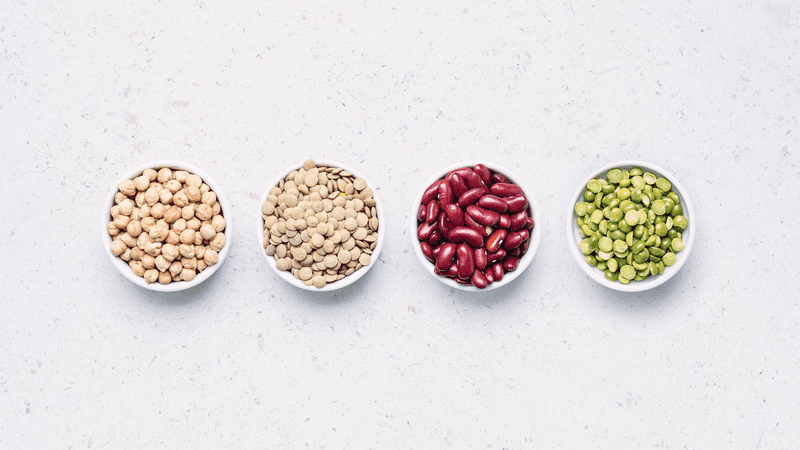What inspired you to start incorporating more beans into your culinary creations?
I’ve always been inclined to use beans in my dishes but I’m finding with the recent uptick in marketing and education around the many nutritional benefits of beans, people are now more open to trying bean dishes.
Here in the café, we’re seeing more requests for bean options, our sales are up, and it gives me the opportunity to experiment with more dishes. I don’t see it stopping and it’s only growing from here, which makes me excited because I’ve always loved cooking with beans, and now I’m able to showcase different varieties in new and delicious culinary creations.
What is your favorite bean to cook with and why?
That’s a tough question because I’ve always loved cooking with beans, but if I had to choose, ceci beans, chickpeas, garbanzo beans—whatever you want to call them—are probably my favorite. They’re incredibly versatile in the kitchen, loved by many cultures, and can be used in different ways and dishes, be it hummus, a falafel, or even a cheesy pasta.
They hold texture well, are the perfect replacement for meat in vegetarian and vegan meals, and they easily plug into any type of recipe, whether it be cold, warm, pureed, whole, or fried—they really fit the bill for everything. And to top it all off, they’re an excellent substitute for animal-based protein and are a rich source of vitamins and fiber.
Is there a specific method you use to prepare beans before cooking, and can you share a few tips for cooking beans?
I always use dry beans and for best results, it’s crucial to soak them well. It takes a bit more planning but is well worth it in the end. You have more control of the cooking process and incorporating different flavors.
The key is to soak the beans for at least eight hours (I like to do it overnight), then discard the water, rinse well, and always use fresh water when you begin cooking. I don’t add salt to the beans until the end, I find it gives you more control of the flavor.
If you’re using canned beans, discard the liquid in the can, rinse well, and use fresh water once you begin cooking.
Another pro tip about soaking the beans is that it levels the playing field when cooking them; so, whether some of your dried beans are fresher than others, the soak will ensure all the beans are cooked to the same level.
Any tips on how to make beans less gassy?
I’ve found that a thorough rinse and deep soak of the beans is an effective way of reducing the gassiness, but the key is to discard the water they’ve been soaking in before cooking. Much of the gas comes out in that water, which is why it’s important to start cooking the beans in fresh water.
At the end of the day, everyone’s body reacts differently. But in my experience, I’ve found this method to help with gassiness caused by beans.
What’s your most creative bean creation?
My most creative bean creation was a black bean brownie. I took roughly 40-50% of the flour and substituted it with pureed black beans that were cooked in water with cocoa powder. The beans soaked up the flavor of the cocoa powder and then I added high-quality chocolate—it was a big hit!
We’ve been doing a lot of that here in the café, substituting animal-based proteins with beans. Another fan favorite is our plant-forward burgers that are 50% kidney beans.
It’s been great to play around with different beans and to see that our patrons really enjoy the variety and different takes on them.
What was your biggest bean blunder?
My biggest bean blunder happened at home. I was rushing around trying to get things done, lost track of time, and figured the beans were halfway done. I put salt in the water, kept on cooking, and cooking, and cooking but they still weren’t done! By the end of the fiasco, the beans were a complete salt lick and I had to throw them out.
Key takeaway: always soak your beans. And to my previous point, add salt at the end!
Needless to say, my family ended up eating a very simple meal that night.

